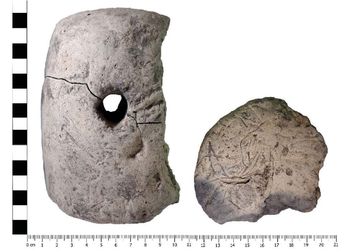Data from a Trial Trench Evaluation at Wellwick Farm, Wendover Green, Buckinghamshire, 2018-2019 (HS2 Phase One)
High Speed Two Ltd., INFRA Archaeology, 2023. https://doi.org/10.5284/1119344. How to cite using this DOI
Data copyright © High Speed Two Ltd. unless otherwise stated
This work is licensed under a The Open Government Licence (OGL).
Primary contact
High Speed Two Ltd.
2 Snowhill
Queensway
Birmingham
B4 6GA
United Kingdom
Tel: 08081 434 434
Resource identifiers
- ADS Collection: 4492
- DOI:https://doi.org/10.5284/1119344
- How to cite using this DOI
Overview

A total of 148 trenches were excavated producing substantial ditches, large pits, postholes and a buried prehistoric soil horizon.
Prehistoric occupation was attested by Late Bronze Age pits, large Iron Age ditches, clay lined storage pits, pits and postholes.
A few ditches and pits also produced Roman wares, showing a later if not continued occupation of the site. Ditches and pits of Medieval date were also present but on a lesser scale. Post-medieval cut features were largely absent; however, a large quantity of Post-medieval ceramics was recovered from the overburden across site, which strongly suggests that the fields remained open with a similar layout to the present.
The site appears to have a domestic function within the prehistoric period, with daub, loom weights and a substantial assemblage of pottery and animal bone present from the Bronze Age through to the Iron Age. Postholes were infrequent and did not definitively show a structure, however these were apparent alongside concentrations of Iron Age pits toward the central southern side of site. The medieval finds are similarly domestic in nature, recovered from regular ditches forming possible rectangular parcels in the south-east of Site.
The concentration of features was predominantly toward the central portion of the site, with the frequency and size of the features present diminishing toward the east, and to a lesser extent toward the west.






